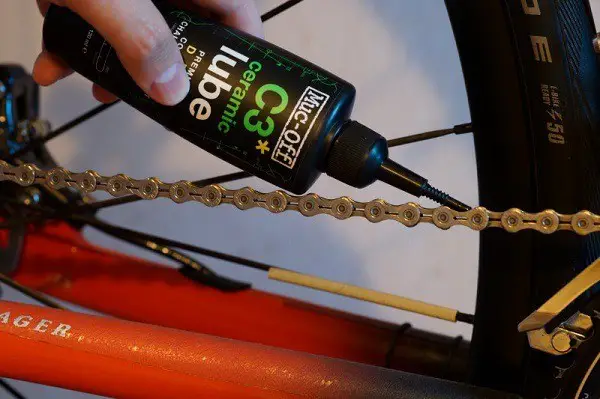Modern models of bicycles involve a complex transmission mechanism. For first-time riders on a multi-speed machine, the shifting process may seem technically complicated, but an experienced cyclist will intuitively be able to correctly change speeds on the bike. Try to explain in simple language, how to correctly switch and what the basic rules should be followed, so as not to threaten the transmission in the first season.
Why you need bike speeds
Choosing a mountain bike, the buyer will certainly wonder how many speeds in it. It can not apply the principle: the more, the better. It all depends on the cyclist, or rather – from his ability to properly switch speeds. And this is a whole art which allows to use the resources of two-wheeled transport as much as possible.
Previously, everything was simple: the bike had one single speed. And it depended on the physical fitness of the cyclist on flat terrain. If you had to go Uphill—how-to-learn–tips, you had to exert effort and loosen it when you came down from the elevation. Nowadays, multispeed bicycles have taken the lead in the market, so their potential owners will have to learn how to use the functions of the drivetrain competently anyway.
Each particular gear corresponds to a particular riding style. There are a whole set of rules about how to correctly shift speeds on a bicycle (1 or 21 doesn’t matter):
- Shift on the fly without putting serious strain on the chain (planetary gears do not have this rule).
- Control the speed using the drivetrain instead of physical effort.
- use the recommended combination of sprockets.
- Take care of your bike by regularly cleaning and lubricating all mechanisms (important: it is better to use silicone compositions for lubricating the transmission).
- It is necessary to change gears when the pedals are stationary.
- If you are just learning how to correctly change speeds on a mountain bike, click in order, not jumping over gears.
A quite logical question arises: and why such a simple transport as a bicycle, several speed modes? It’s simple: for a more comfortable ride, saving power and a balanced distribution of load.
Based on this, we can make a brief conclusion: variations in speed are necessary in the situation where the cyclist needs to adjust the load depending on several factors.
How it works
The essence of shifting is the sequential shifting of the bicycle chain from one sprocket to another. The combination of front and rear gears allows the best possible distribution of the load on the main components of the vehicle. Here it will not be superfluous to have at least the slightest idea about the device of the transmission.
It consists of a set of interrelated elements, among which can be distinguished a system of connecting rods, carriage, sprocket, bike chain, front and rear derailleurs and shifters (also called shifters).
Types
There are two types: external derailleurs and internal derailleurs.
Internal
The mechanism is inside the rear planetary hub. Advantages:
- Resistant to the effects of adverse weather conditions (the mechanism, along with all the parts, is located in a virtually sealed housing);
- speeds are switched without turning the pedals.
Disadvantages:
- Tangible weight;
- technically difficult to repair, which is unrealistic outside the repair shop.
External
This type is used on many models of multi-speed bicycles. Advantages:
- simple mechanism;
- low weight;
- relatively low cost;
- a considerable range of gears.
Disadvantages:
- susceptibility to external adverse influences;
- the need for constant maintenance and attention from the rider;
- high probability of damage if the bike falls;
- You can’t change gears if the bike is in one place.
Cadence
This point should not be overlooked when it comes to properly shifting gears. To begin with, it wouldn’t hurt to define this beautiful term. Cadence is the number of pedal revolutions per minute. Because we are all different, and our bikes are different from each other, it is impossible to derive a single cadence parameter. Every cyclist has an individual cadence. But here’s the thing: cadence should be chosen carefully so as not to get hurt, but the speed of rotation was comfortable.
It makes no sense to pedal too fast or too slow. Only by focusing on your own sensations can you get the cadence right. Accordingly, this parameter is influenced by factors such as the physical fitness of the cyclist, weather conditions, the condition of the pavement, the strength of the oncoming wind and even the blood glucose level. Yes, some formulas do exist, but it is inappropriate to use them equally in relation to the novice cyclist and the professional athlete. Cadence is of great importance for:
- road bikes (average pedal speed is 90-110 rpm);
- Cross-country riders (70 to 90 rpm).
These values apply to professional athletes. Beginners are better off starting small and gradually improving their performance.
Switching gears while climbing
Many people think that you should not change gears while riding Uphill—how-to-learn–tips. It’s not quite right – you should not change gears at the last second when you have to put in a lot of effort to pedal.
Warning. You really should not go Uphill—how-to-learn–tips to change gears on the front gears (downshift from 1 to 2 or 2 to 3).
Correct gear shifting
Your job is to keep the rhythm (the speed of the pedals). Watch it all the time, sticking to the average – 80-100 rpm. Now it is important to understand how to pick up and switch gears correctly.
The combination of the smallest front sprocket and the largest rear sprocket gives the most power and is used on steep climbs.
The combination of the largest front sprocket and the smallest rear sprocket gives the most speed.
It’s a good idea to start with the middle front star and use the rear derailleur to find a comfortable load on your limbs. If the road goes Uphill—how-to-learn–tips, and you feel that the power of the rear stars is no longer enough – switch to the large front gear. Once the pace becomes habitual, you need to go back to the middle sprocket.
It’s the same situation with the lower gears. Going Uphill—how-to-learn–tips and feeling that the rear stars aren’t enough – go to the front smallest sprocket, and then go back to the middle sprocket when the pace normalizes.
In fact, if there are 3 stars in the front and 9 in the rear, the transmission has 27 speeds. However, this does not mean that it is mandatory to use them all. Plus, in today’s bike industry, “bigger” does not mean “better” or “faster.” Designers now strive for a similar range of gears with fewer gears. So, for example, a more advanced transmission with one front sprocket and 12 rear sprockets completely overlaps a range with three front and nine rear sprockets. The trend is that a drivetrain with fewer sprockets is more convenient and practical to use, maintain and adjust. It also weighs a lot less.
Selecting star combinations
To make sure there is no misalignment, all you have to do is look at the chain. If it moves within the front derailleur, you’ve picked the best gear combination.
The main principle: any combination of gears are in approximately the same vertical plane.
Now let’s break down the most convenient combinations of gears for beginners:
- Large front star with the fourth through eighth driven gears (for moving on smooth roads).
- Medium front with the third through sixth rear sprockets (for riding on trails with minor bumps or just to put a little more strain on your legs).
- Small front with the first to the third auxiliary sprockets (used when climbing Uphill—how-to-learn–tips, in a strong headwind, when riding on dirt, sand, high grass, etc.).
Remember that the wrong combination of stars can end up with rapid wear and tear mechanisms and components of the transmission. Plus, don’t forget to maintain the complex gear shifting device in a timely manner.
Maintenance Recommendations
The main rule – regular cleaning and lubrication of components. This includes the bike chain, gears, cassette and other transmission components. Don’t ride in puddles – water has never been good for the complex mechanisms. If got in the rain – wipe dry and slightly lubricate the chain and sprockets.
Always listen to your vehicle: as a rule, a specific sound, occurring when shifting eloquently indicates a possible breakage. Check the condition of the chain: periodically measure its length to eliminate the possibility of stretching.
Conclusion
Learning how to work with gears is not as difficult as it may seem at first glance. Once you understand the principle and strictly observe the basic prohibitions, shifting will be at the level of intuition. Perfect shifting accuracy depends on all the gears and the technical condition of the bike. Check the condition of the gears, rollers, drive elements and other components regularly to create the best possible conditions for a flawless transmission.














